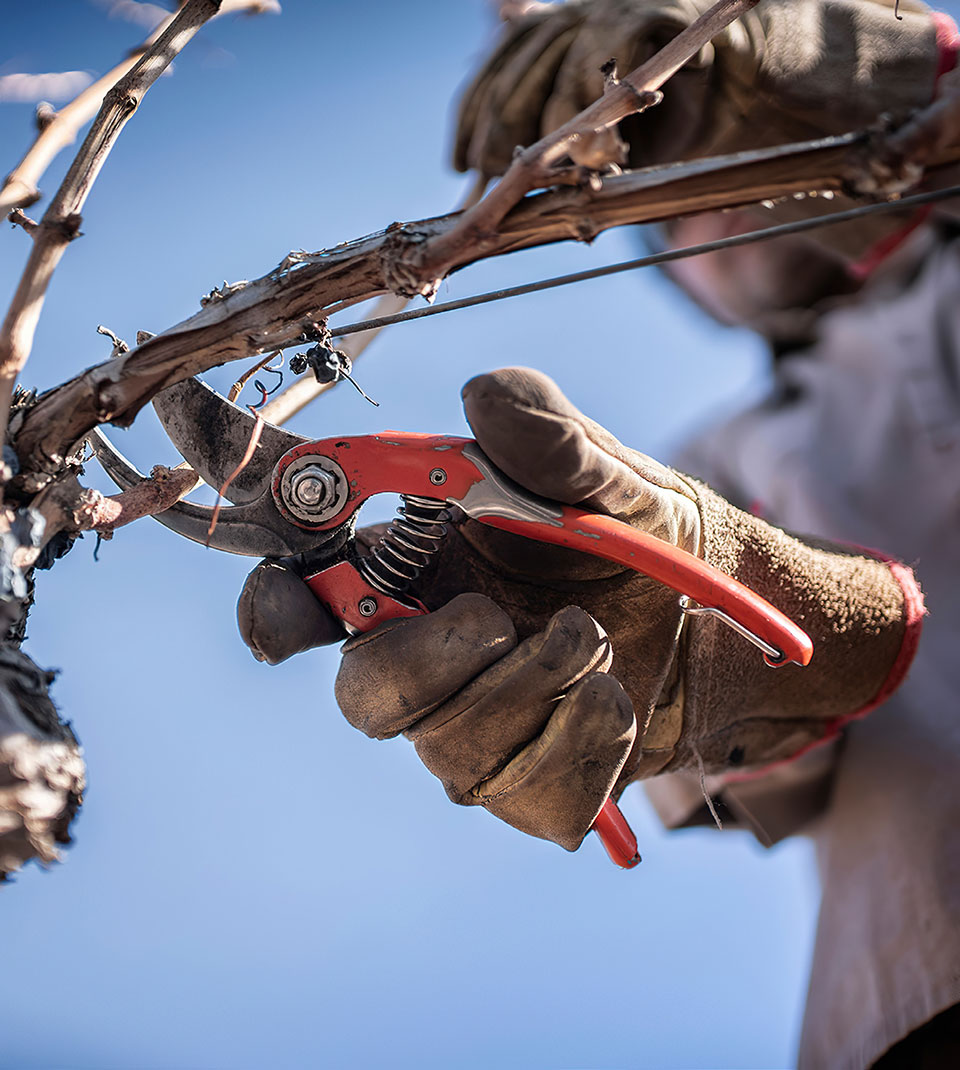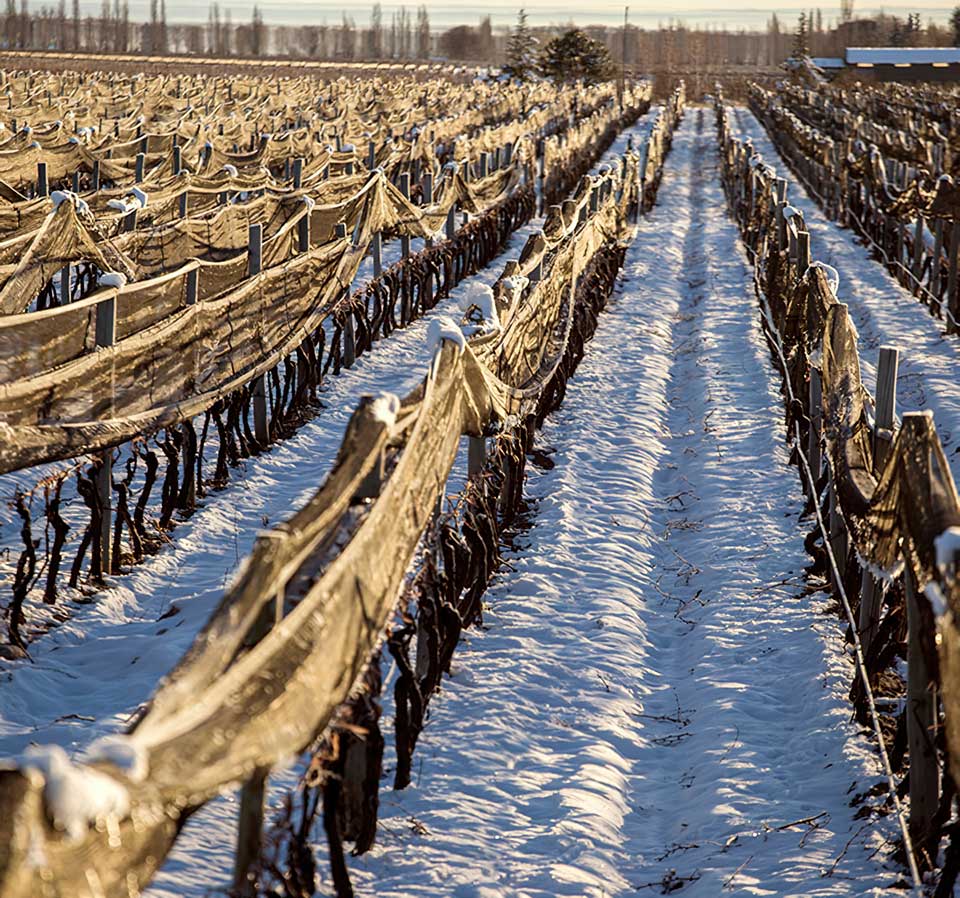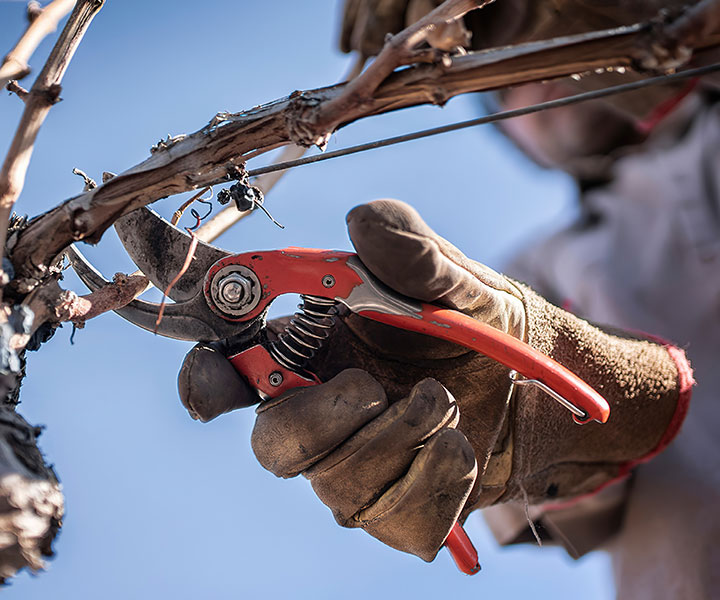Just as it happens in the field and all its crops, each decision made at the vineyard during the vine’s productive cycle is crucial to obtain quality wines. This is exactly why the human intervention on plants and the natural environment is also part of the concept of terroir that involves the soil, climate, the grape varieties and geography.
Of all agricultural works conducted at the estates, winter pruning is essential to maintain the plants’ shape and control their healthy growth. Along with the harvest, this is undoubtedly the most important task performed every year at the vineyard.
Under natural conditions, the vine is a climbing plant whose shoots or branches may reach up to 30 meters in length. Therefore, pruning consists in operating plants to reduce (with a pruning shear) its vegetative part and limit its natural growth, to achieve balanced yield, and thus obtain a smaller quantity of bunches, although with a greater concentration of colors and organoleptic compounds.
During the winter season, between the months of July and August, this shoot and bud selection will also allow for fruits born from plants to be better ventilated, with plenty of sunshine. Therefore, pruning not only improves the vines’ yield, but also enhances the grapes’ health.

As Engineer Alberto Arizu (Sir) points out, from the very moment that a vineyard has been planted, there must always be a reason behind each activity performed at the estate

Even though vines are pruned every year, this is far from becoming a standardized activity; by contrast, it always varies as it depends on the specific needs of each plant. Luigi Bosca’s agricultural team must interpret each of our vines to achieve balance and harmony within the vineyard, two fundamental characteristics to obtain top quality fruits.
As Engineer Alberto Arizu (Sir) points out, from the very moment that a vineyard has been planted, there must always be a reason behind each activity performed at the estate. In the case of the winter pruning, we must be clearly sure of the wine we want to make based on the grapes grown in said plants. Since then, it would be enough to follow that conviction and be able to interpret the plant to manage to “shape it”, for it to produce the fruits needed to achieve the wine we have in mind.
Age, a key aspect for pruning
Beyond the specific needs of each plant, the age of vines also defines the pruning process that will be carried out in them.
In the case of young plants, recently planted in an estate, the first pruning tasks –known as “shape pruning”– will define its further growth type. Just like the conduction system chosen (trellis or arbor systems are the most frequently used methods in our country), the yield of a vineyard will depend on the terroir, the grape variety planted and the region’s climate.
In the case of older plants, pruning regulates their growth and balances their yield so that, by the end of the production cycle, the expression that our agronomists and winemakers expect from the fruits for winemaking purposes, according to the style of the winery, is finally achieved.



